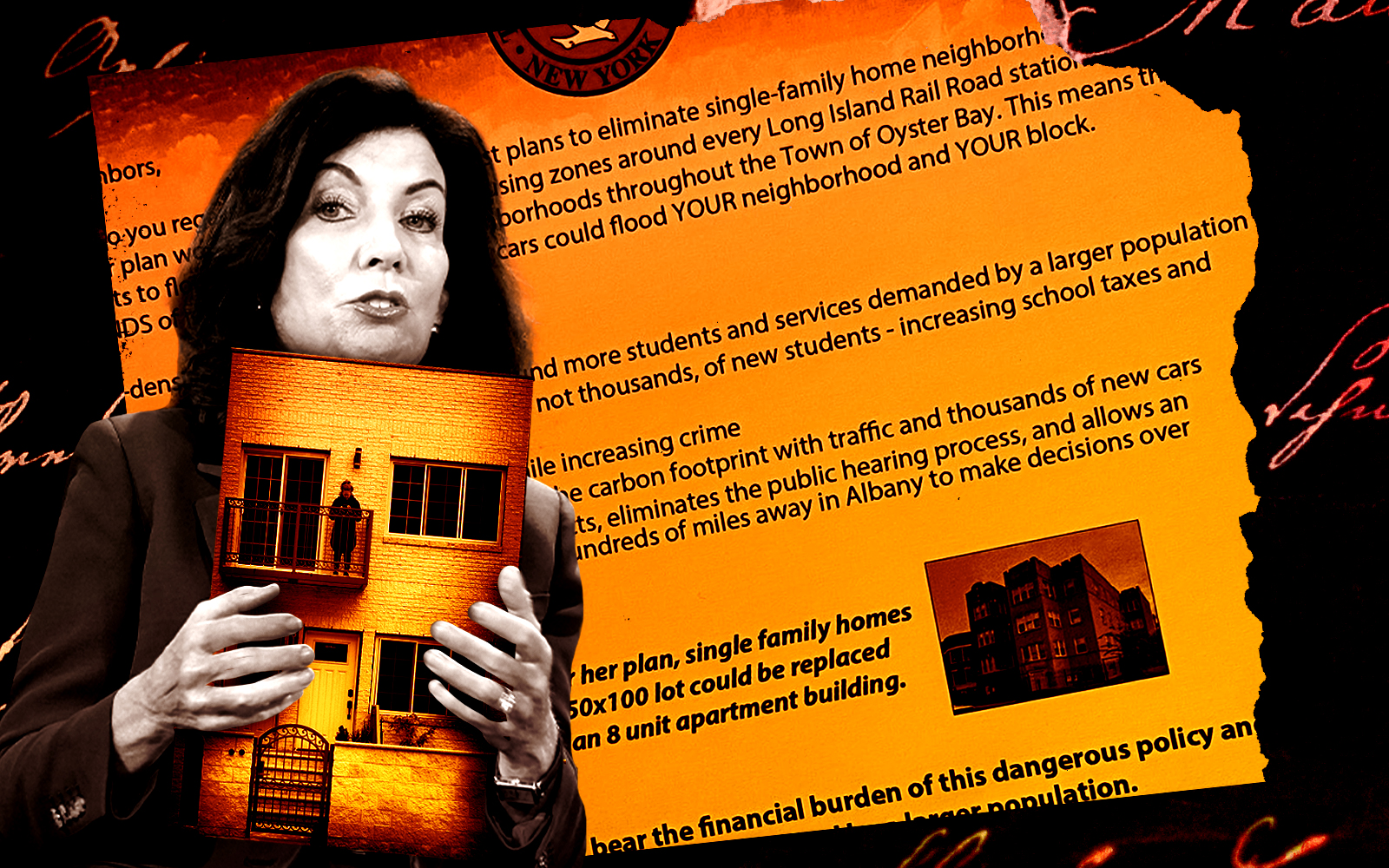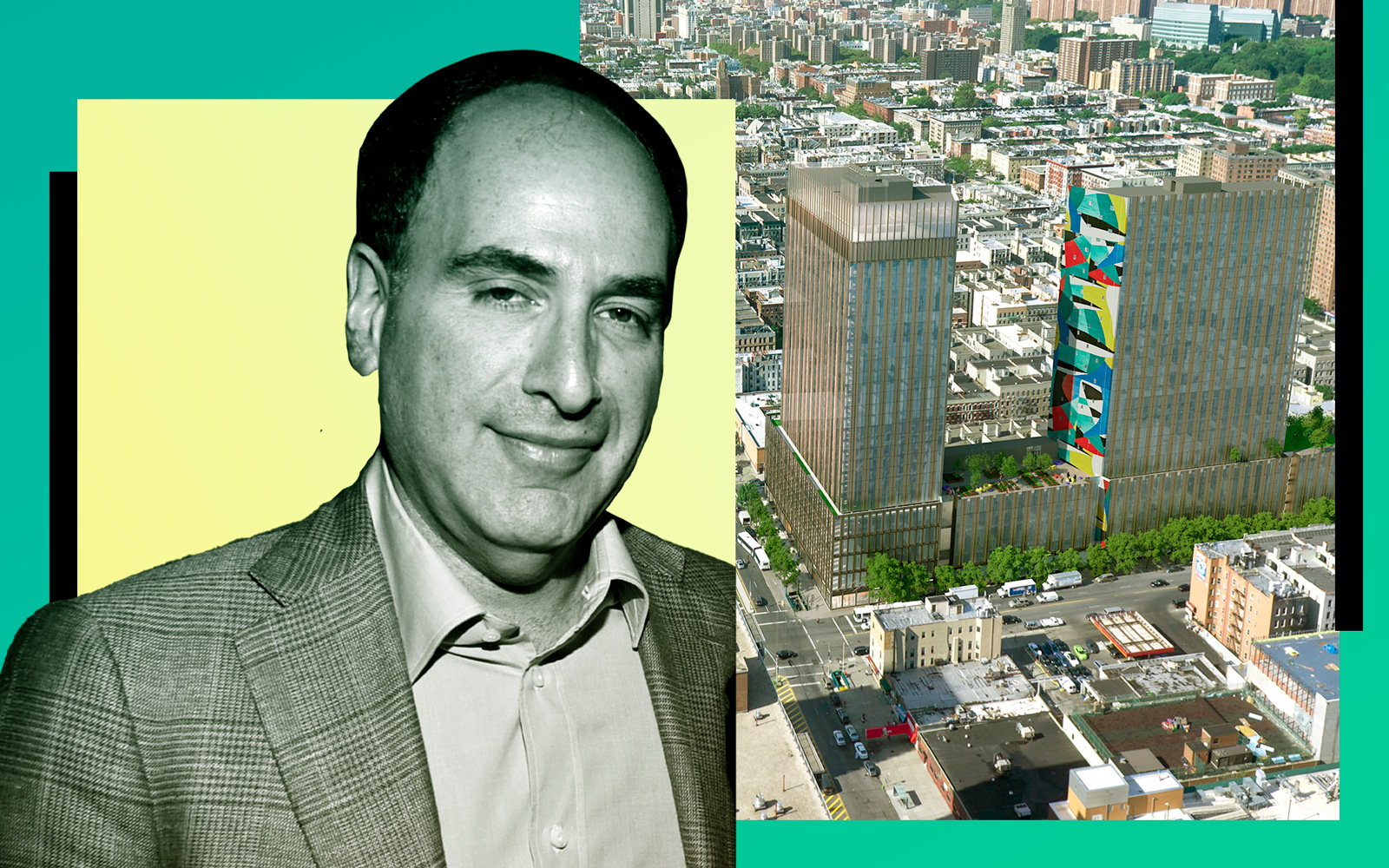
FAR out: Pols oppose tall buildings in Manhattan
Fight to preserve NYC’s floor-area ratio cap is baffling — and backward

When Manhattan elected officials held a press conference Friday to support keeping a citywide density cap on residential buildings, the disconnect was lost on no one.
It’s kind of obligatory for New Yorkers to point out the absurdity of Manhattanites complaining about skyscrapers. Which they promptly did.
“Tall buildings in Manhattan?” one observer tweeted. “Clearly out of character for **squints** the largest concentration of tall buildings in the USA.”
One wonders, what’s next on these New York officials’ hit list? Broadway? Pizza? Jaywalking?
“I expected this much from most of these ghouls,” real estate professional Ben Carlos Thypin tweeted of the politicians who gathered, “but it’s sad to see @LizKrueger debase herself like this.”
Sen. Krueger, at the far right in this photo, is regarded as one of New York’s more intelligent lawmakers and not as prone to pandering as, say, the man at the podium, Christopher Marte. He was the City Council candidate who opposed the rezoning that will bring thousands of affordable and market-rate units to Soho, which he now represents.
At Friday’s event, Krueger said the following in making her case to keep the citywide residential density limit, according to City & State:
“All these empty luxury units just reinforces how much money is being made in real estate. … They can actually leave them empty and still be making money.”
That’s like saying all those unsold SUVs on the lot reinforces how much money is being made by automakers.
Yes, luxury apartments sometimes take a while to sell, but that is true for high-end housing in general. Manhattan homes asking $4 million or more take an average of two years just to go into contract. Besides, developers who can’t find buyers or tenants don’t make money; they get foreclosed upon.
Thypin, a real estate investor, called Krueger’s quote “absolutely innumerate nonsense from the chair of the New York State Senate’s Finance Committee.”
He then turned his attention to the venue of Friday’s press event — where the Senate and Assembly have offices — to highlight the inanity of the politicians’ position.
“250 Broadway is a 30-story, 476K sf building on a 23K sf lot,” Thypin tweeted. “These people think that it’s ok if buildings this large are used as offices but not as homes for New Yorkers.”
That’s a key point.
The floor-area ratio cap applies to residential, not commercial, properties in the five boroughs. In any market, it would be a head-scratcher of a policy, but in New York City, which has an infamously tight housing market and a surplus of office space, it is unconscionable.
Episodes like these betray elected officials’ true priorities. One of the FAR cap defenders, Assembly member Jo Anne Simon, represents Boerum Hill, Brooklyn, where some of her row house–dwelling constituents objected to an apartment tower proposed for Flatbush Avenue, across from the borough’s biggest transit hub. It was just too tall for their sensibilities, or something.
Simon lost that battle, although the borough president at the time, Eric Adams, and the local City Council member forced the developer to reduce the height somewhat. As a member of the state legislature, Simon had no official say in the rezoning that the project needed.
She can, however, defend the FAR cap, because it’s a state law. Lifting it would allow for more housing in Downtown Brooklyn, which has a bunch of towers already, but only thin ones, because of the cap.
Adams, as mayor, has come around to the notion that the city needs more housing, not an artificial cap imposed by Albany. But Simon, Marte, Krueger and others are still stuck in their low-scale mentality, elevating their own aesthetic priorities over the city’s housing crisis.
Read more







